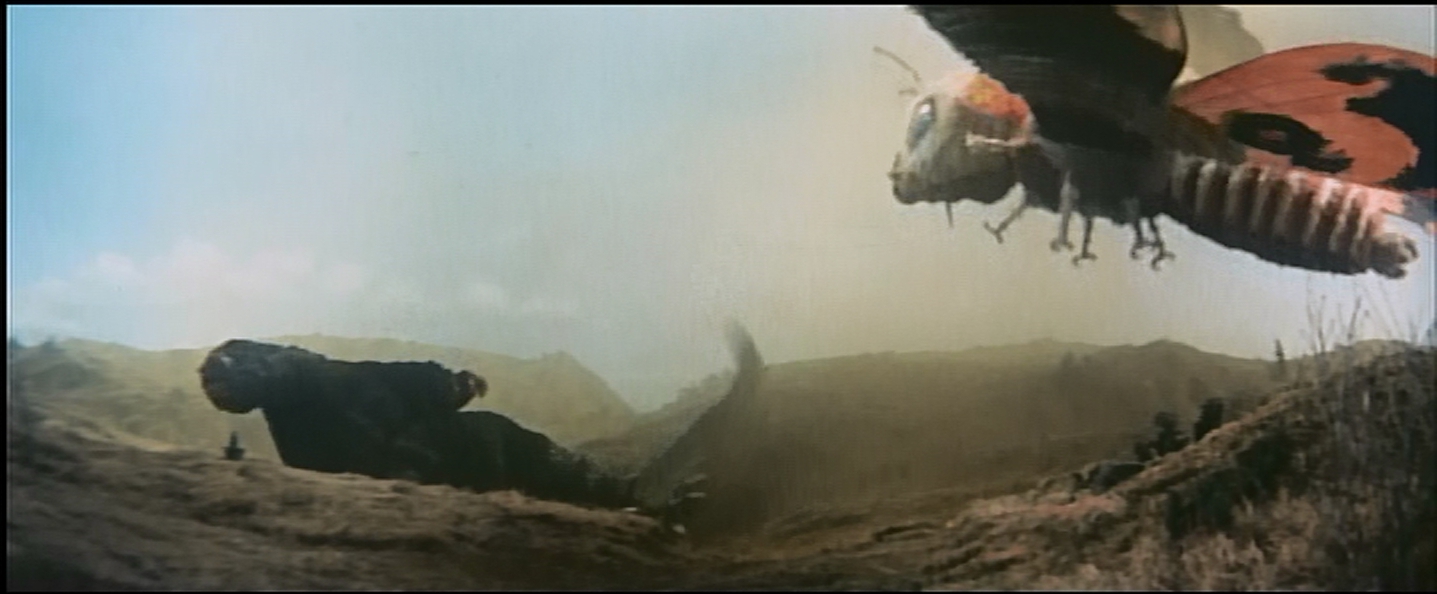
Mothra's human-like motivation and compassion are demonstrated when it becomes clear that she will sacrifice herself for others. Mothra does not expect to come back from its mission to fight Godzilla, but fight even though humanity has refused to help her not an hour ago. In an expansion of her previous powers, Mothra deploys her poisonous powder, a weapon of last resort from a dying monster. Amid a thunderous rendition of her theme, Mothra dies minutes before her egg hatches. In keeping with the twins theme, and possibly in honor of the Peanuts, a rare set of Japanese twins, the egg hatches into a pair of Mothra larvae.
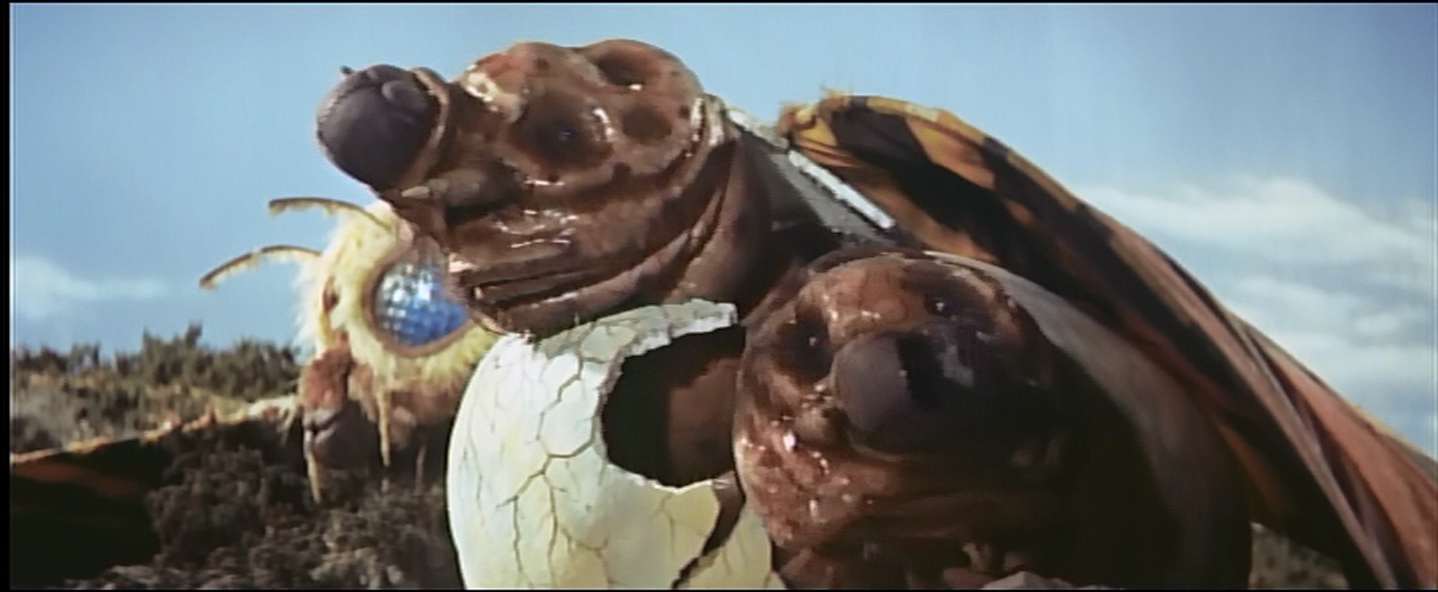
Mothra films also involve themes that other Kaiju fulms tend to neglect, from religion to the role of women. Junko is a woman photographer, apparently new to the job, but whose photographer's eye catches the important detail in the midst of the debris in the opening sequence. She doesn't do much other than follow the protagonist around and notice things for the rest of the film, but at least she's there, and she's doing something. In a nod to the religious motifs of the first Mothra, we see a Shinto priest go out to banish bad spirits when the giant Mothra egg drifts into the luckless village. Obviously, he should have driven away the greedy industrialist.
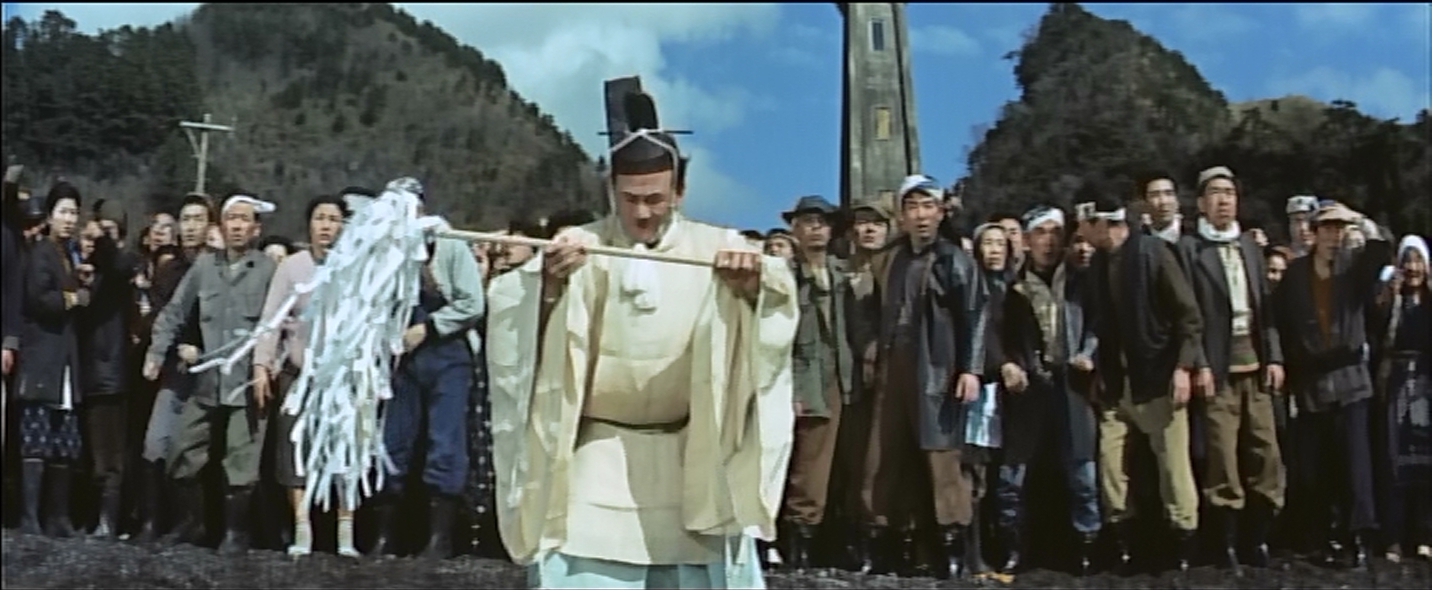
Despite Mothra's innovative nature, Mothra vs Godzilla is essentially a retread of King Kong vs Godzilla. A monster from another franchise challenges Godzilla. The similarities between Kong and Mothra are quite apparent, each is a living god to an island-swelling people, each is more thoughtful than the Godzilla-style monster of rampage and destruction. The worshippers of Infant Island seem more Pacific Islander than the ones from the previous film. And their chief may have the most impressive hat in all of moviedom.
This is one of the few films in which Godzilla does not come directly from the sea. Instead, he wakes up on the beach, after being washed ashore and buried by the typhoon at the beginning of the film. Of course, he immediately begins destroying everything in sight.
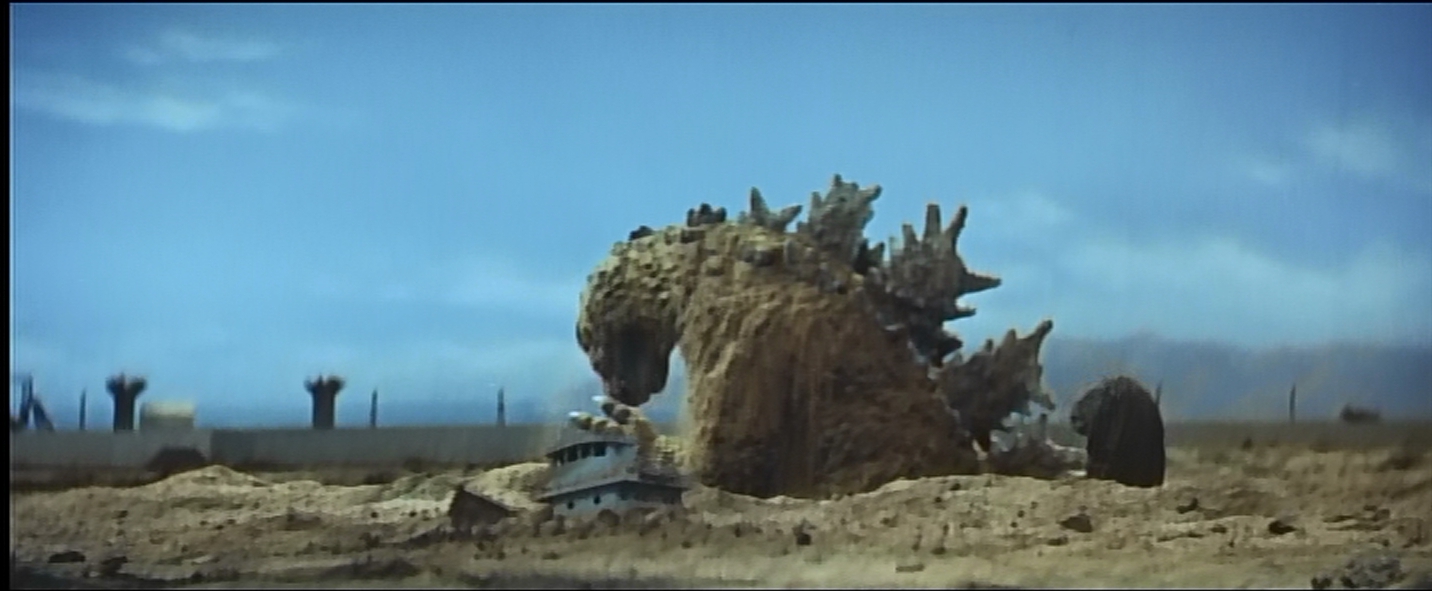
Although the film eschews the humorous edge of King Kong vs Godzilla, it has a few funny moments, such as when Godzilla gets its tail stuck in a tower. Reporter Jiro is constantly being told about the Mothra egg as he eats a hard-boiled egg. The addition of humor to relieve the grim nature of the film will play a larger role in future Godzilla films.
The human plot is OK. Reporters are once again present to show the truth, and cut through the industrialists' lies. We have not just one greedy-head but a pair of them who receive morality-play justice. After they quarrel over money, one shoots the other in the back. The survivor then attempts to haul a heavy load of money out of a hotel as Godzilla approaches. He doesn't get out in time.
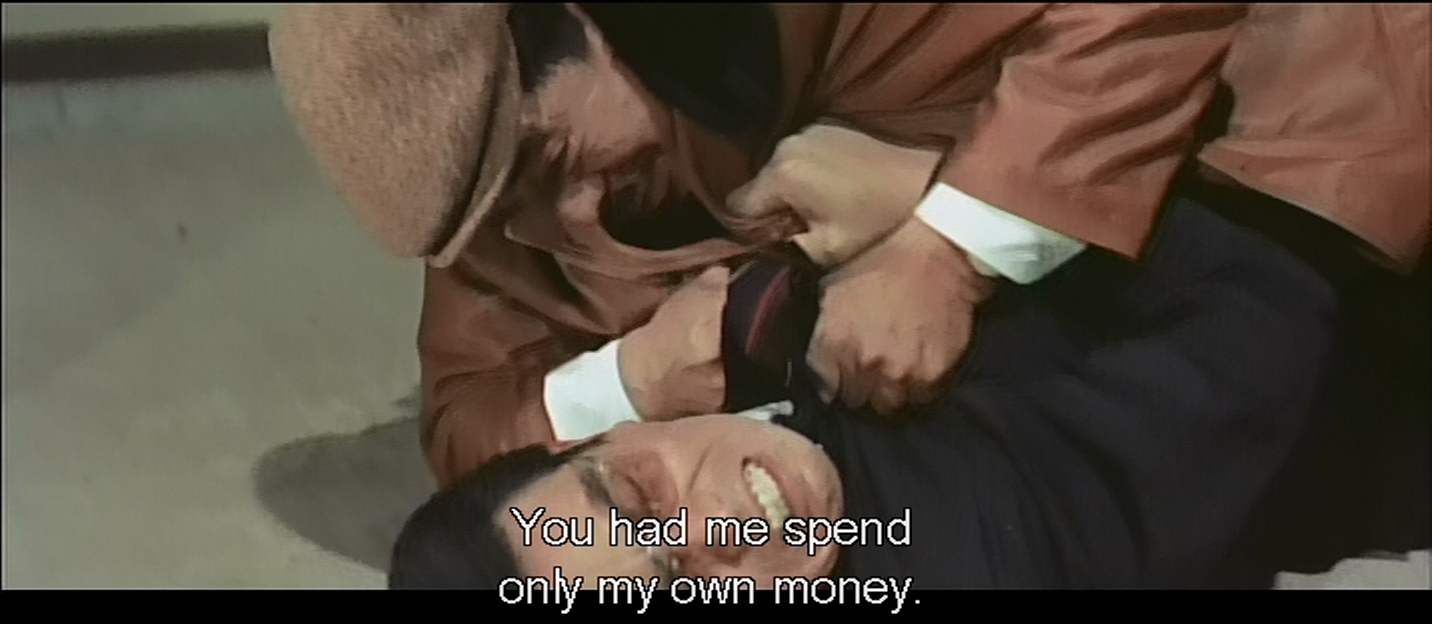
As with the three previous Godzilal films, Godzilla takes down a castle. In this case, it's Nagoya Castle in Nagoya. It's worth noting that in Godzilla's last Showa film as a villain, he destroys a famous landmark that was rebuilt after being bombed and burned by US forces in World War II. Godzilla's association with the American military is fading with this film, as Japan's economic boom let people look forward to the future, rather than back to gone glories.
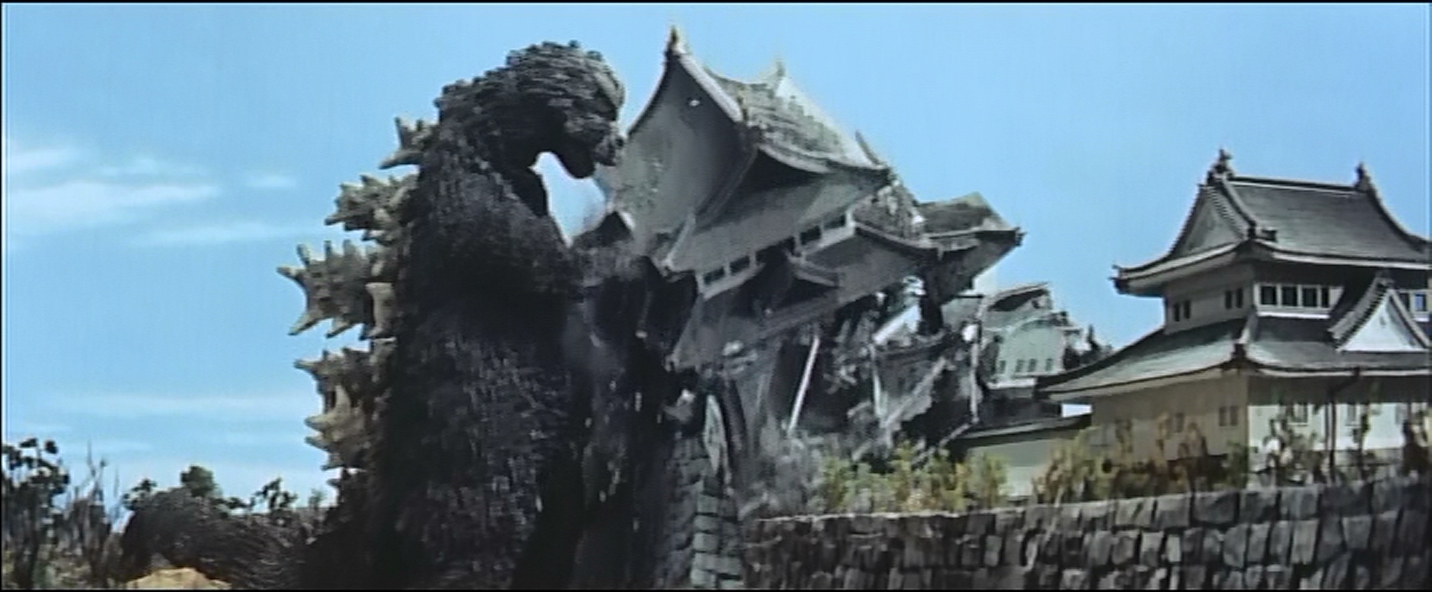
And again the military does its best to stop Godzilla. Now that Japan has expanded its industrial capacity, the military is expecting to run some 20 to 30 million volts through Godzilla, to see if that stops him. And, for a wonder, it does. Metal nets are dropped on Godzilla, and they light him up. Godzilla writhes on the ground, obviously in pain. But in a moment of incompetence, the commander orders the voltage increased. The wires melt, and Godzilla is freed. Naturally, no-one ever tries to stop Godzilla with electricity again.
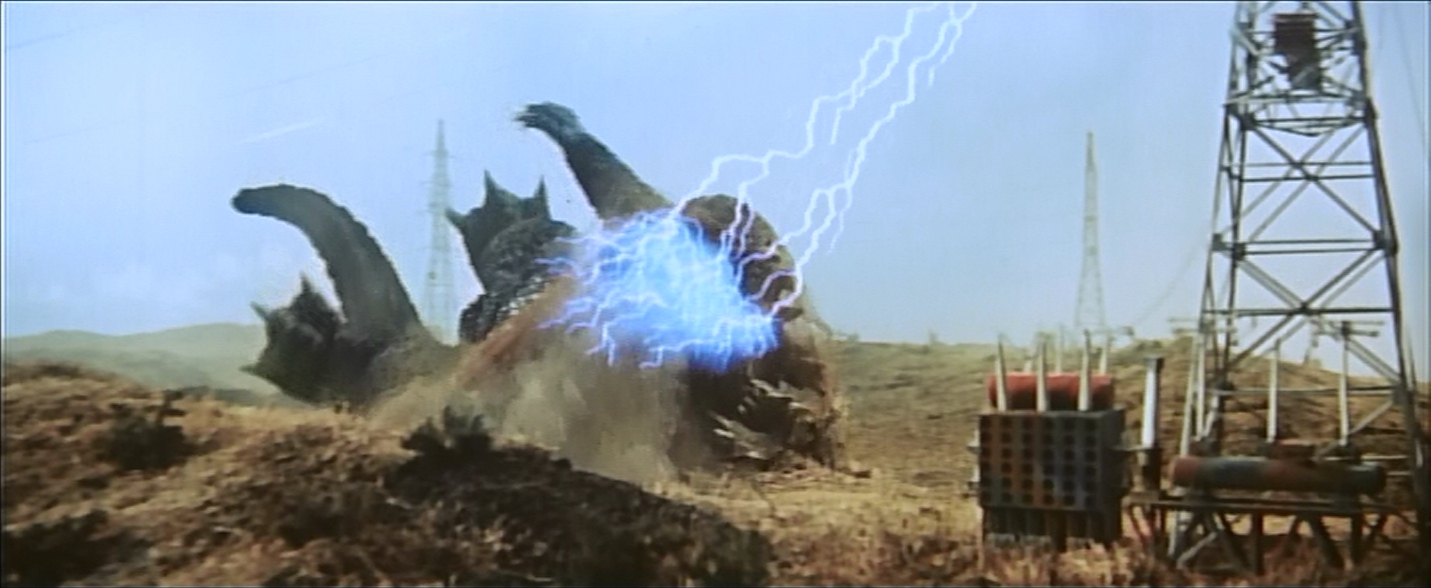
The monster fighing scenes are extensive, as are the military ones. In particular, there are a lot of explosions and fires, as if Tsubaraya was suddenly interested in the practical application of lighter fluid. Unfortunately, his inexperience shows, and we are treated to a brief moment when the Godzilla suit's head catches fire.
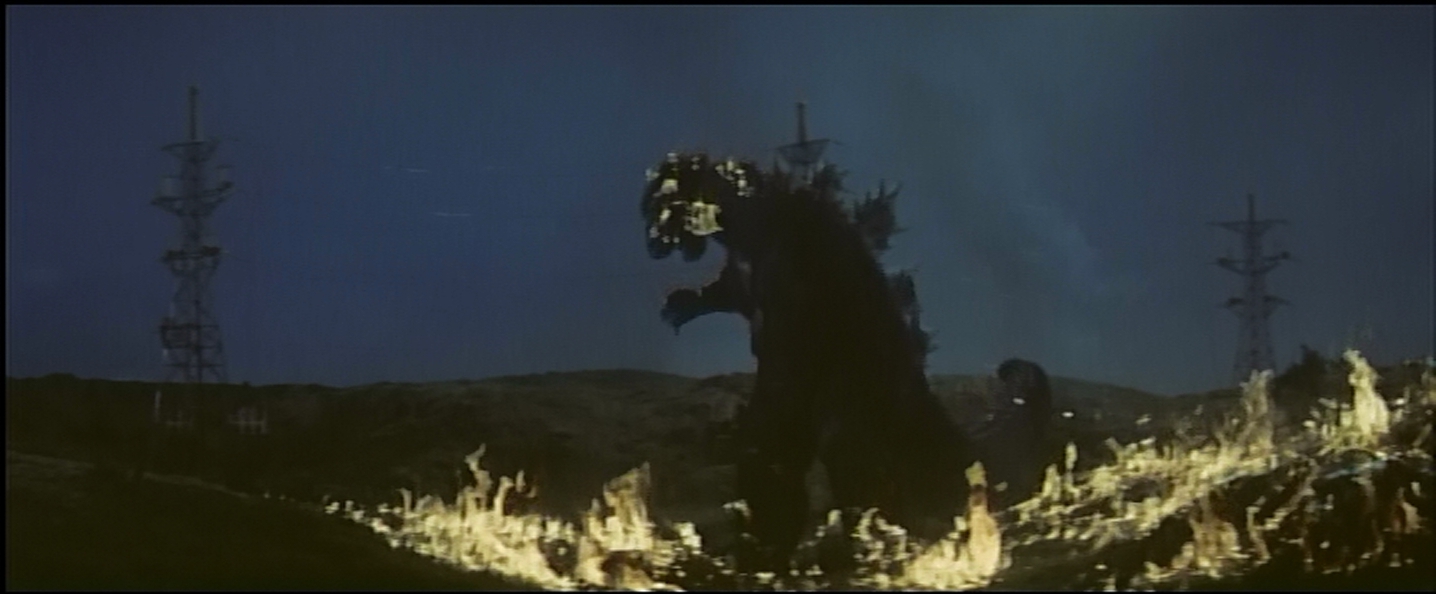
Godzilla's roar in this flm is one of my favorites. There's a metallic grind as it bottoms out, making it monstrous and angry. The suit is a bit overly-rubbery, and has two lighter eyebrows that give him a look of concentration.
Themes of motherhood and nurture are continued when it is discovered that a group of schoolchildren are on Iwa Island, which seems to be Godzilla's destination. A ferry crew risk themselves to save the children. Luckily, the Mothra larvae understand teamwork from birth, and move to intercept Godzilla as the children are rescued.
The ending leaves me a bit flat. At first, a larva grabs Godilla's tail, only to be thrown around in a scene that will be repeated a couple of times in the franchise. When this fails to work, the larvae dodge Godzilla's atomic ray as they coat him with their silk. Practically cocooned, he falls into the ocean. The Shobijin wave their goodbyes and ride back to Infant Island on the Mothra larvae. The End.
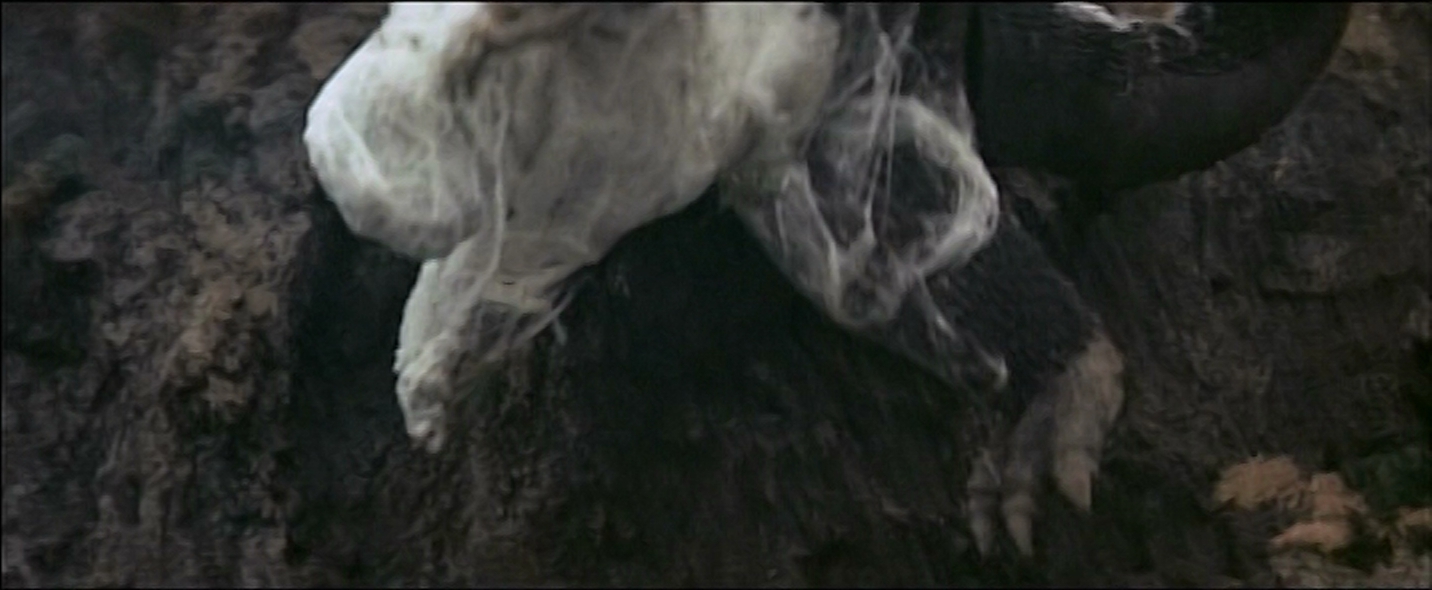
Despite the let-down of the ending, Mothra vs Godzilla is one of the strongest of the Showa era Godzilla films. The plethora of themes, the long monster action sequences, and the well-scripted B-plot all combine to make this a film that's a pleasure to watch.
Next up, the first appearance, of Godzilla's greatest, most enduring enemy. Who has more than the usual number of heads, and some of Akira Ifikube's most beautiful music.
No comments:
Post a Comment